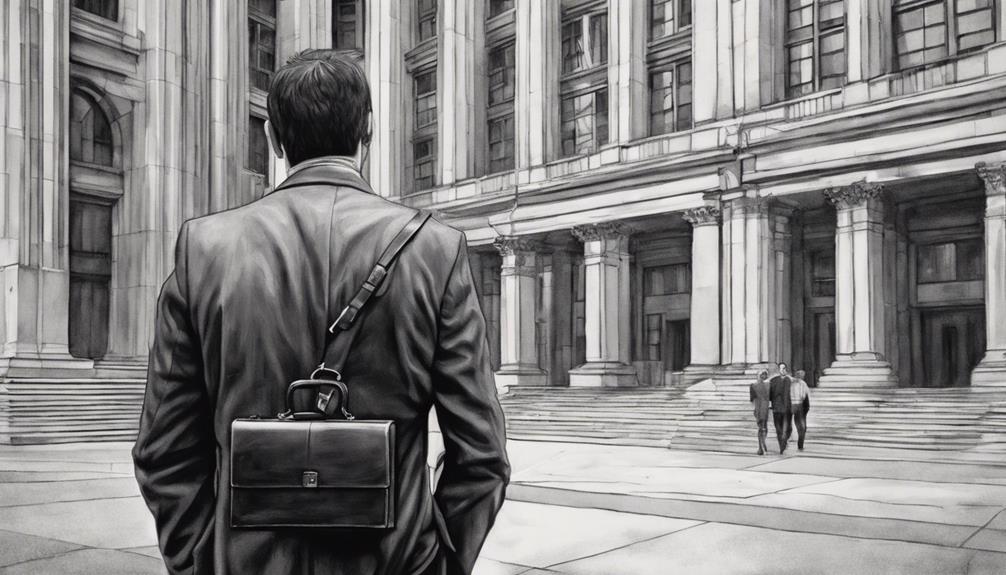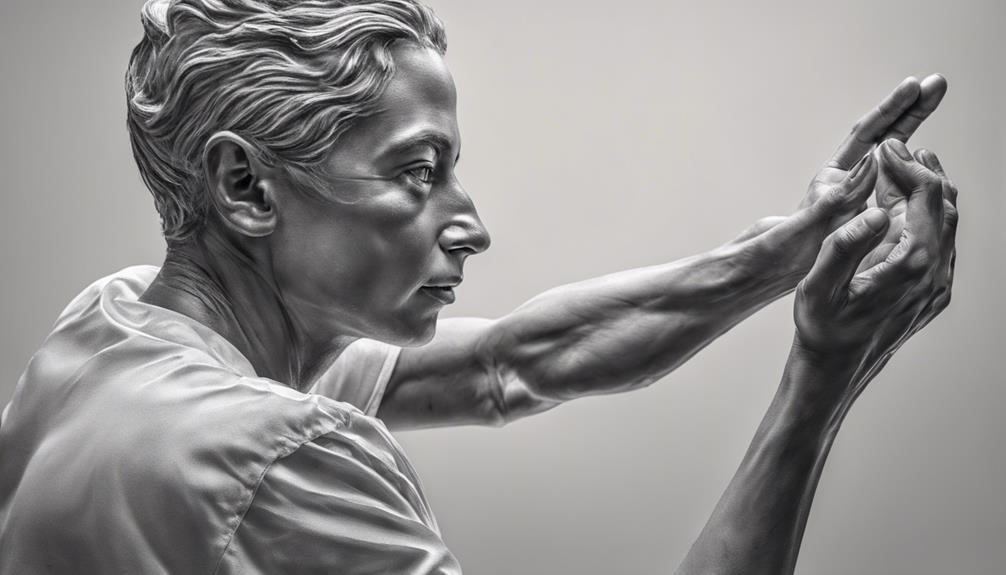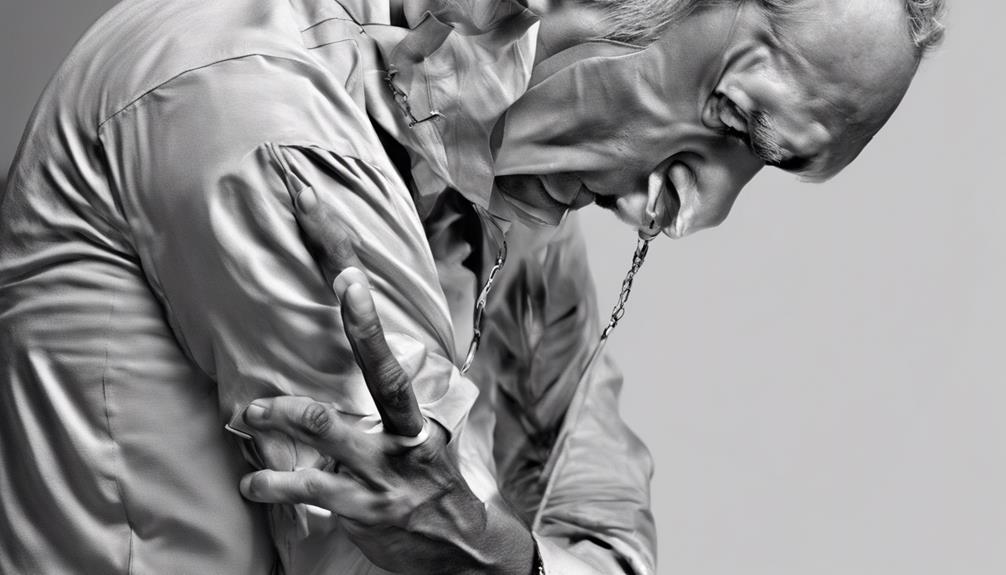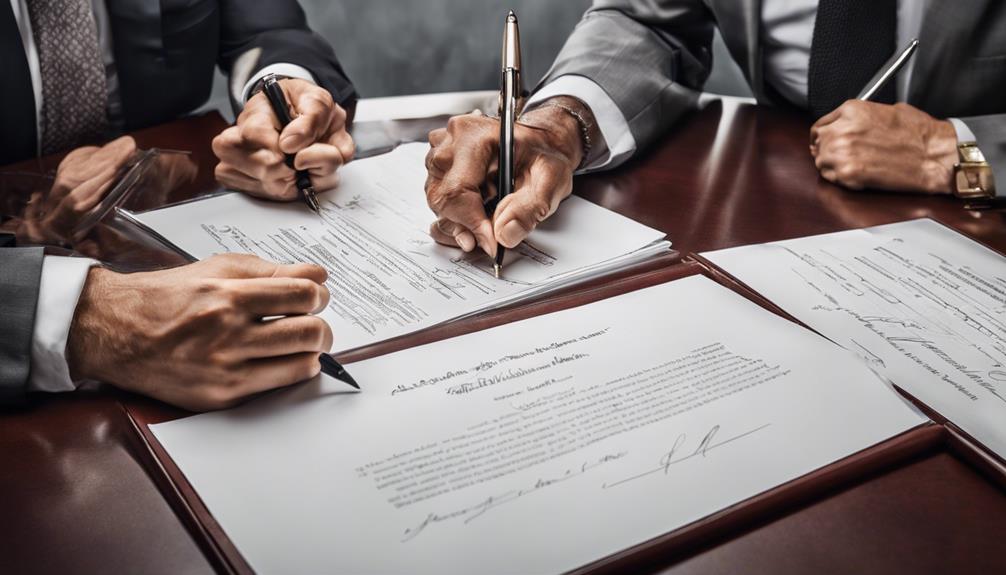Understanding furtive movements is crucial. These surreptitious actions involve quick, subtle gestures for covert purposes. Identification, social interactions, and legal matters can be influenced by them. Observing body language and context aids in identifying such behavior. Furtive actions can raise suspicion and be misinterpreted as potential threats. In legal situations, they are crucial in establishing probable cause. Responding to these gestures requires careful interpretation to avoid misunderstandings. Navigating through these intricacies requires expertise. Further investigation uncovers the subtleties and importance of furtive movements in different contexts.
Key Takeaways
- Furtive movements are secretive actions to avoid detection.
- Context is crucial for accurate interpretation of furtive behavior.
- Misjudging furtive gestures can lead to suspicion and misinterpretation.
- Understanding the setting and circumstances is vital for interpreting furtive actions.
- Proper training is essential in distinguishing threats from harmless furtive movements.
The Nature of Furtive Movements
What defines the nature of furtive movements?
Furtive movements encompass secretive or sly actions undertaken to conceal intentions or motives. These actions often manifest as quick, stealthy glances or subtle gestures, indicating an attempt to avoid detection or scrutiny. The essence of furtive behavior lies in its covert nature, designed to fly under the radar and evade direct observation. Subjective judgment plays a vital role in accurately identifying furtive behavior, as what may seem furtive to one observer could appear entirely innocuous to another.
In high-stress situations, furtive movements can lead to misunderstandings or misinterpretations, potentially exacerbating tense circumstances. Thus, understanding the implications of furtive movements is paramount for avoiding misjudgments and their potential consequences. Mastery in recognizing these behaviors can help individuals navigate social interactions with heightened awareness and precision, ultimately fostering clearer communication and more accurate assessments of others' intentions.
Identifying Furtive Behavior

Identifying furtive behavior involves observing body language, considering the context of surroundings, and recognizing sudden movements.
These clues can help individuals, including law enforcement officers, assess whether someone is behaving in a secretive or deceptive manner.
Understanding these key points is essential for accurately interpreting furtive behavior in various situations.
Observation of Body Language
Effective observation of body language is crucial in detecting furtive behavior, as it often manifests through subtle yet revealing cues. When observing body language to identify furtive behavior, one should look for:
- Quick, covert movements or glances
- Avoidance of eye contact
- Sudden changes in posture
- Reaching for concealed objects
- Attempts to hide something
Understanding these non-verbal cues can help in evaluating the presence of furtive movements accurately.
Police training often emphasizes the importance of recognizing furtive behavior as a potential threat during encounters. By mastering the skill of interpreting body language, individuals can enhance their ability to detect furtive behavior effectively.
Context of Surroundings
Considering the context of surroundings is vital for accurately interpreting furtive behavior. Furtive movements can vary in significance based on the environment in which they occur. Factors like lighting, the presence of other individuals, and the time of day all contribute to the interpretation of such actions. Understanding how these elements influence the perception of furtive behavior is essential for distinguishing between innocent gestures and potentially suspicious conduct.
Recognizing Sudden Movements
When observing individuals, noticing sudden, stealthy movements can often provide insight into potential hidden motives or intentions.
- Furtive movements often involve quick, secretive actions that may signify underlying purposes.
- Identifying furtive behavior demands sharp observation of sudden gestures or glances.
- Police officers may subjectively interpret furtive movements, leading to heightened scrutiny.
- Understanding the context and surroundings aids in distinguishing between innocent actions and potential concerns.
- Misunderstandings of furtive movements can lead to severe repercussions, highlighting the importance of cautious judgment in critical scenarios.
Implications of Furtive Actions

Furtive actions can raise suspicion due to their secretive nature. They often involve concealing intent and can be interpreted as potential threats.
Understanding the implications of furtive movements is essential in evaluating behavior accurately.
Suspicion in Behavior
Suspicious behavior stemming from furtive actions can trigger heightened vigilance and potential misinterpretations in various situations. When examining this phenomenon, it's important to take into account the following points:
- Furtive actions often involve secretive or sneaky movements, which can raise suspicion.
- The subjective nature of furtive behavior can lead to misunderstandings between individuals.
- Policies like NYC's stop-and-frisk heavily relied on officers' interpretation of furtive movements, sometimes resulting in high stop rates with low arrest outcomes.
- Misjudging furtive actions, especially in cases involving concealed carry weapon holders, can have severe consequences, potentially leading to the use of deadly force.
- Understanding how to differentiate between innocent gestures and potentially dangerous actions is essential for self-defense, as it can prevent tragic outcomes.
Concealment of Intent
Misinterpretations of behavior can arise when individuals engage in furtive actions, particularly concerning the concealment of intent. Furtive movements, such as quick glances or stealthy behavior, may indicate hidden motives or intentions behind an individual's actions.
These actions, often associated with secrecy, can lead to varying interpretations among observers. For instance, law enforcement officers may view furtive actions as suspicious, prompting further investigation.
Understanding the implications of furtive actions is vital in accurately evaluating behavior and potential threats. Different perceptions of furtive movements can influence responses in different situations, highlighting the importance of recognizing and interpreting these behaviors effectively.
Potential Threat Assessment
Effective threat assessment hinges on keen observation of behavior patterns that may signal hidden intentions or motives. When considering furtive movements, the following are key points to keep in memory:
- Furtive actions are subjective and can lead to varied interpretations.
- Responding to uncertain furtive movements requires careful consideration to avoid legal, emotional, and financial repercussions.
- Tragic incidents like Amadou Diallo's death underscore the consequences of misjudging furtive movements.
- Continuous reflection on furtive movements in self-defense scenarios is vital for making informed decisions under pressure.
- Understanding the implications of furtive actions can assist in maneuvering complex situations and ensuring appropriate responses.
Furtive Movements in Legal Context

In legal proceedings, the analysis of stealthy movements serves as an important factor in determining the justification for police actions and potential legal outcomes. Stealthy movements play a pivotal role in legal contexts, especially in establishing probable cause for searches or arrests. Courts often consider stealthy movements alongside other evidence to assess the legality of police actions.
However, the interpretation of these movements can differ among law enforcement officers, leading to varied legal outcomes. Understanding the significance of stealthy movements is essential for individuals involved in legal proceedings, particularly in cases involving self-defense or encounters with law enforcement. The legal implications of stealthy movements underscore the importance of clear communication and actions to prevent misunderstandings that could result in legal consequences.
Mastery of this aspect of legal analysis is essential for maneuvering through the complexities of the legal system and ensuring fair treatment under the law.
Challenges in Responding to Furtive Gestures

Traversing the complexities of legal proceedings demands a keen awareness of the challenges posed by addressing secretive gestures. When responding to furtive movements, individuals encounter various obstacles that require careful navigation. These challenges include:
- Subjectivity: Furtive gestures are often open to interpretation, leading to potential misunderstandings.
- Variability in Responses: Police reactions to furtive movements can differ based on personal perceptions and training backgrounds.
- Risk of Misinterpretation: Misunderstandings of furtive gestures have, in some instances, resulted in tragic consequences.
- Contextual Importance: Understanding the setting and circumstances is vital in evaluating the significance of furtive movements.
- Training Necessity: Proper training in distinguishing between genuine threats and harmless actions is crucial for effectively responding to furtive gestures.
Mastering the art of responding to furtive gestures requires a deep understanding of these challenges and a commitment to developing strategies that prioritize accuracy and safety.
Navigating Furtive Movements Ethically

Ethical navigation of furtive movements demands a nuanced understanding of subjective interpretations and potential consequences. Recognizing the variability of stealthy gestures among individuals and situations is pivotal. Caution in interpreting these movements can prevent misunderstandings. It's essential to ponder the legal and ethical implications when responding to perceived covert actions. Misjudging furtive movements, especially in self-defense scenarios, can lead to severe consequences. Hence, reflecting on the significance of furtive movements in critical situations is necessary.
Navigating furtive movements ethically demands a thoughtful approach that balances vigilance with sensitivity. Professionals in security and law enforcement must continuously debate and reflect on the ethical implications of their actions. By maintaining a high level of awareness and staying informed about best practices, individuals can navigate furtive movements ethically, minimizing the risk of misinterpretation and potential harm. Ultimately, ethical navigation of furtive movements demands a commitment to upholding integrity and fairness in all interactions.
Frequently Asked Questions
How Can Individuals Effectively Communicate With Someone Exhibiting Furtive Movements Without Escalating the Situation?
When encountering someone exhibiting furtive movements, individuals can effectively communicate by remaining calm, maintaining a non-threatening posture, using open-ended questions, active listening, and showing empathy. This approach can help de-escalate the situation and foster understanding.
Are There Cultural Differences in the Interpretation of Furtive Behavior That Should Be Considered?
Cultural differences in interpreting furtive behavior can have a crucial impact on communication. It's important to recognize these nuances to avoid misunderstandings. Acknowledging diverse perspectives fosters empathy and enhances cross-cultural interactions, promoting effective communication in various contexts.
Can Furtive Movements Be Indicative of Underlying Mental Health Issues or Trauma?
Furtive movements can indeed be indicative of underlying mental health issues or trauma. Recognizing these signs early on is important in providing appropriate support and intervention to individuals who may be struggling with these challenges.
What Role Do Personal Biases Play in Perceiving Furtive Movements, and How Can They Be Mitigated?
Personal biases heavily influence the perception of furtive movements. They can lead to misinterpretations and unjust actions. To mitigate biases, individuals must actively seek awareness, challenge preconceptions, and foster empathy through education and self-reflection.
Are There Specific Training Programs Available for Individuals to Better Understand and Respond to Furtive Gestures in Various Settings?
There are specialized training programs available for individuals to enhance their understanding and response to furtive gestures in different settings. These programs offer valuable insights and techniques to help participants navigate such situations effectively.
Conclusion
To sum up, stealthy movements can hold significant importance in various contexts, including legal and ethical considerations.
For instance, in a real-life scenario, a security guard may observe a person exhibiting covert behavior by constantly looking around and concealing an object in their jacket.
This observation could prompt further investigation to guarantee the safety and security of the surrounding area.
Understanding and recognizing stealthy movements are vital for making informed decisions and taking appropriate actions.











